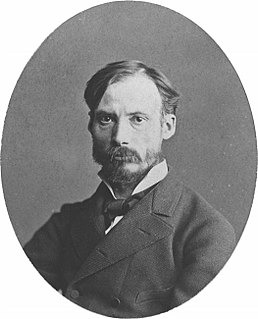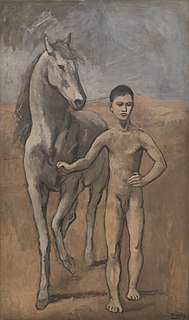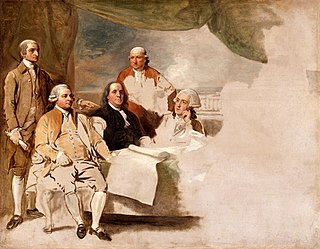
Bastille Day is the common name given in English-speaking countries to the national day of France, which is celebrated on 14 July each year. In French, it is formally called the Fête nationale française ; legally it is known as le 14 juillet.

Édouard Manet was a French modernist painter. He was one of the first 19th-century artists to paint modern life, as well as a pivotal figure in the transition from Realism to Impressionism.

Pierre-Auguste Renoir was a French artist who was a leading painter in the development of the Impressionist style. As a celebrator of beauty and especially feminine sensuality, it has been said that "Renoir is the final representative of a tradition which runs directly from Rubens to Watteau."

The Place de la Concorde is one of the major public squares in Paris, France. Measuring 7.6 ha in area, it is the largest square in the French capital. It is located in the city's eighth arrondissement, at the eastern end of the Champs-Élysées.

Jean-Édouard Vuillard was a French painter, decorative artist and printmaker. From 1891 through 1900, he was a prominent member of the Nabis, making paintings which assembled areas of pure color, and interior scenes, influenced by Japanese prints, where the subjects were blended into colors and patterns. He also was a decorative artist, painting theater sets, panels for interior decoration, and designing plates and stained glass. After 1900, when the Nabis broke up, he adopted a more realistic style, painting landscapes and interiors with lavish detail and vivid colors. In the 1920s and 1930s he painted portraits of prominent figures in French industry and the arts in their familiar settings.

Frederick Childe Hassam was an American Impressionist painter, noted for his urban and coastal scenes. Along with Mary Cassatt and John Henry Twachtman, Hassam was instrumental in promulgating Impressionism to American collectors, dealers, and museums. He produced over 3,000 paintings, oils, watercolors, etchings, and lithographs over the course of his career, and was an influential American artist of the early 20th century.

The Musée Carnavalet in Paris is dedicated to the history of the city. The museum occupies two neighboring mansions: the Hôtel Carnavalet and the former Hôtel Le Peletier de Saint Fargeau. On the advice of Baron Haussmann, the civil servant who transformed Paris in the latter half of the 19th century, the Hôtel Carnavalet was purchased by the Municipal Council of Paris in 1866; it was opened to the public in 1880. By the latter part of the 20th century, the museum was full to capacity. The Hôtel Le Peletier de Saint Fargeau was annexed to the Carnavalet and opened to the public in 1989.

Walter Gay was an American painter noted both for his genre paintings of French peasants, paintings of opulent interior scenes and was a notable art collector.

The Old Lyme Congregational Church is located in Old Lyme, Connecticut. The church is noted as a favorite subject of Old Lyme Art Colony painters. It is affiliated with the United Church of Christ.

St Francis Xavier Church (French: Église Saint-François-Xavier or Église Saint-François-Xavier-des-Missions-étrangères is a parish Roman Catholic church in the 7th arrondissement of Paris dedicated to Francis Xavier, the patron saint of missions. Built in the late 19th century, It gave its name to the nearby Metro station Saint-François-Xavier. It contains the tomb of Madeleine Sophie Barat, a French saint of the Catholic Church and founder of the Society of the Sacred Heart, a worldwide religious institute of educators.It also known for its collection of Italian Baroque and Mannerist paintings, including a work by Tintoretto.

Jeune garçon au cheval is an oil on canvas painting by Pablo Picasso. The painting is housed in the Museum of Modern Art in New York. It was painted in Picasso's Rose Period from 1905 to 1906, when he was still a struggling artist living in Paris. The painting is a study for a much larger composition that Picasso never completed.

Allen Butler Talcott was an American landscape painter. After studying art in Paris for three years at Académie Julian, he returned to the United States, becoming one of the first members of the Old Lyme Art Colony in Connecticut. His paintings, usually landscapes depicting the local scenery and often executed en plein air, were generally Barbizon and Tonalist, sometimes incorporating elements of Impressionism. He was especially known and respected for his paintings of trees. After eight summers at Old Lyme, he died there at the age of 41.

The Avenue in the Rain is a 1917 oil painting by the American Impressionist painter Childe Hassam. It depicts Fifth Avenue in New York City in the rain, draped with U.S. flags. The painting is one of six works by Hassam in the permanent art collection of the White House in Washington, D.C.

Surf, Isles of Shoals is a 1913 painting by Childe Hassam. Done in oil on canvas, the work depicts the rugged New England shoreline near Portsmouth, New Hampshire. The painting is currently in the collection of the Metropolitan Museum of Art.

Coast Scene, Isles of Shoals is a 1901 painting by Childe Hassam which is in the collection of the Metropolitan Museum of Art.

Broadway and 42nd Street is a 1902 painting by Childe Hassam which is part of the collection of the Metropolitan Museum of Art.

The Water Garden is a 1909 painting by Childe Hassam. Done in oil on canvas, the painting is on display at the Metropolitan Museum of Art, in New York.

Winter in Union Square is a late 19th-century painting by American artist Childe Hassam. Done in oil on canvas, the painting depicts Union Square in New York City during a winter snowstorm. The painting is in the collection of the Metropolitan Museum of Art.

The Rue Mosnier with Flags is an 1878 oil on canvas painting by Édouard Manet, showing the eponymous Parisian street, decorated with French flags for the first national holiday on 30 June 1878, the Fête de la Paix. The Fête de la Paix was held during that year's Exposition Universelle, which together marked France's recovery after the Franco-Prussian War and the Paris Commune. The holiday was moved to 14 July in 1880 to become Bastille Day. The painting is held by the J. Paul Getty Museum in Los Angeles.

American Commissioners of the Preliminary Peace Agreement with Great Britain, also known as the Treaty of Paris, is a 1783 unfinished painting by Benjamin West depicting the United States delegation that negotiated the 1783 Treaty of Paris, which formally ended the American Revolutionary War. Peace negotiations began in Paris on June 25, 1783, and the eventual signing of the treaty took place on September 3, 1783 at the Hotel York at 56 rue Jacob. The green drapery in the painting's background and the distant landscape with a classical colonnaded building emphasize the scene's formality.




















